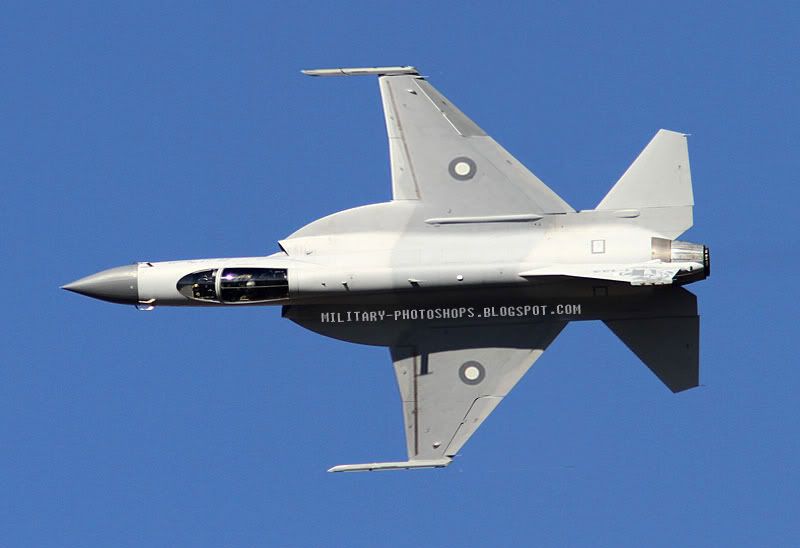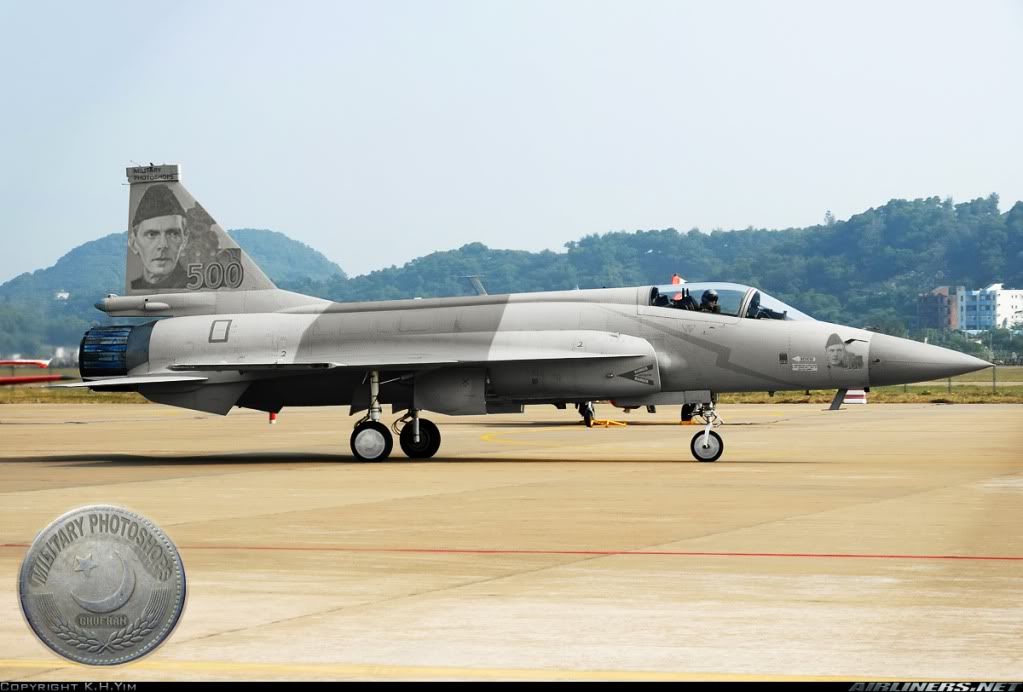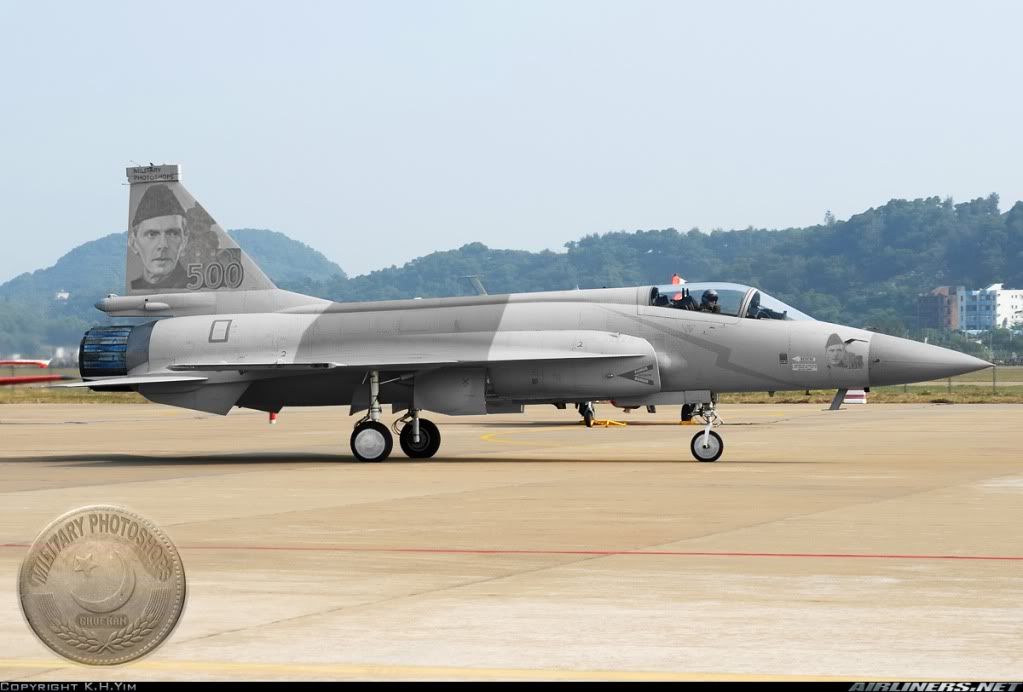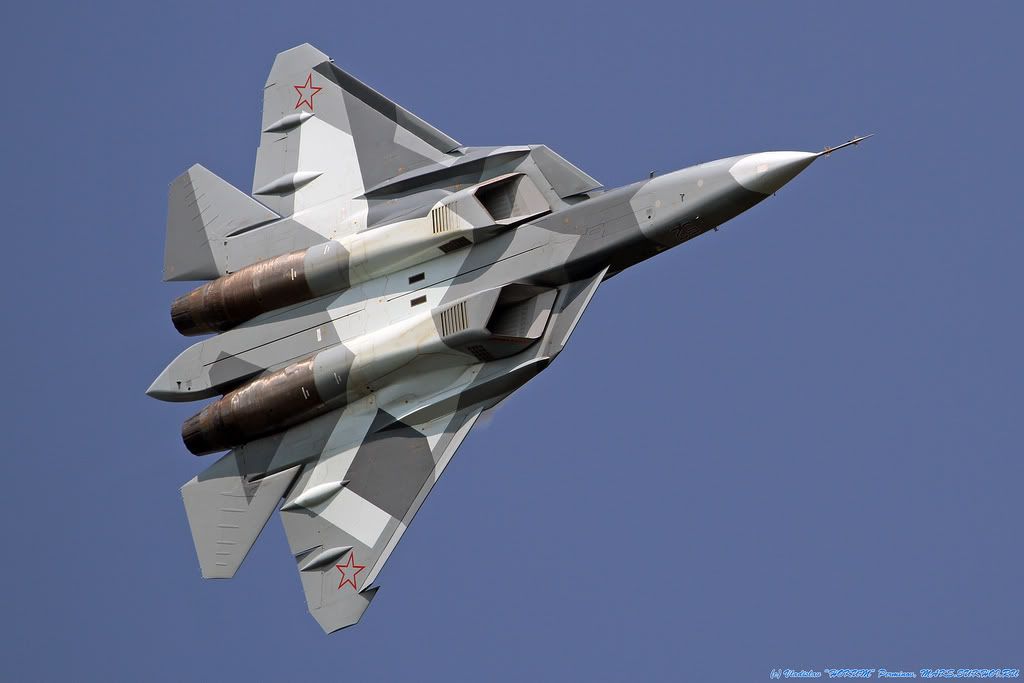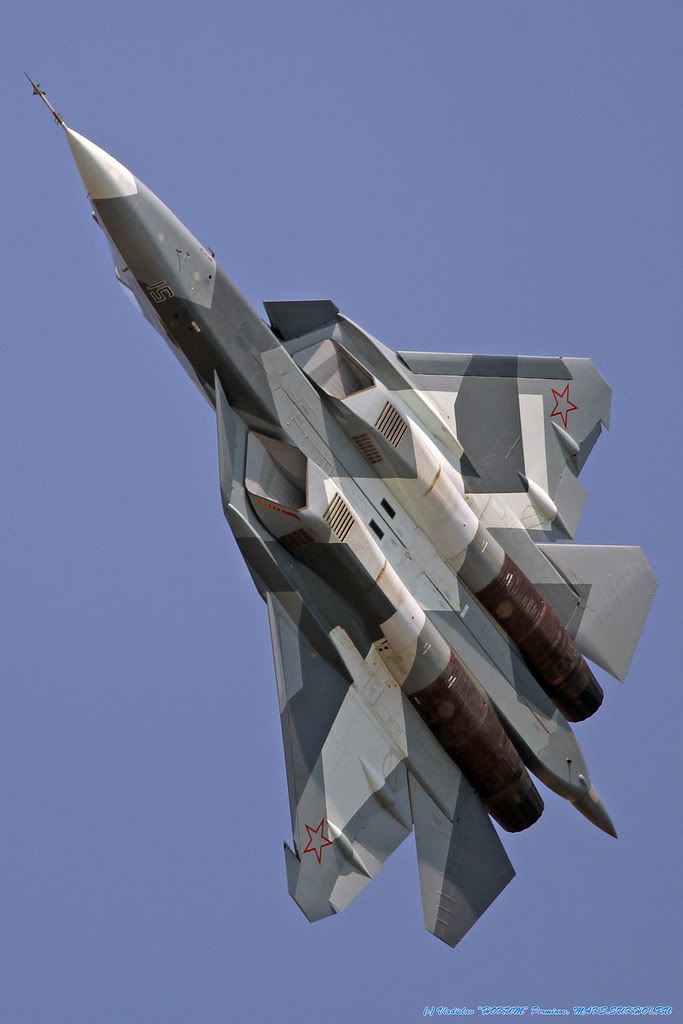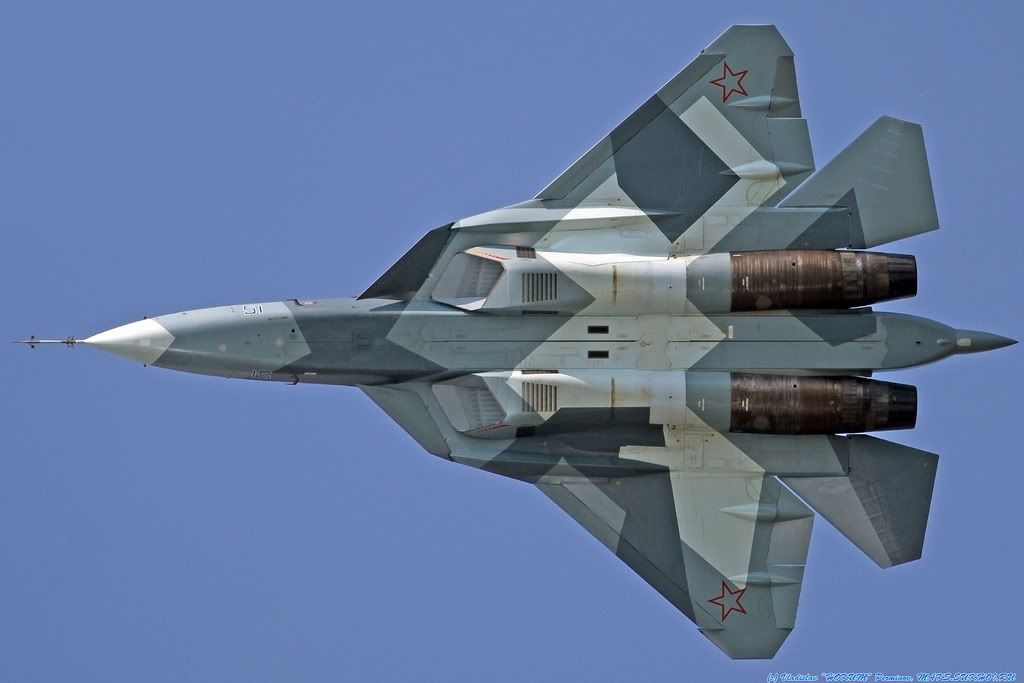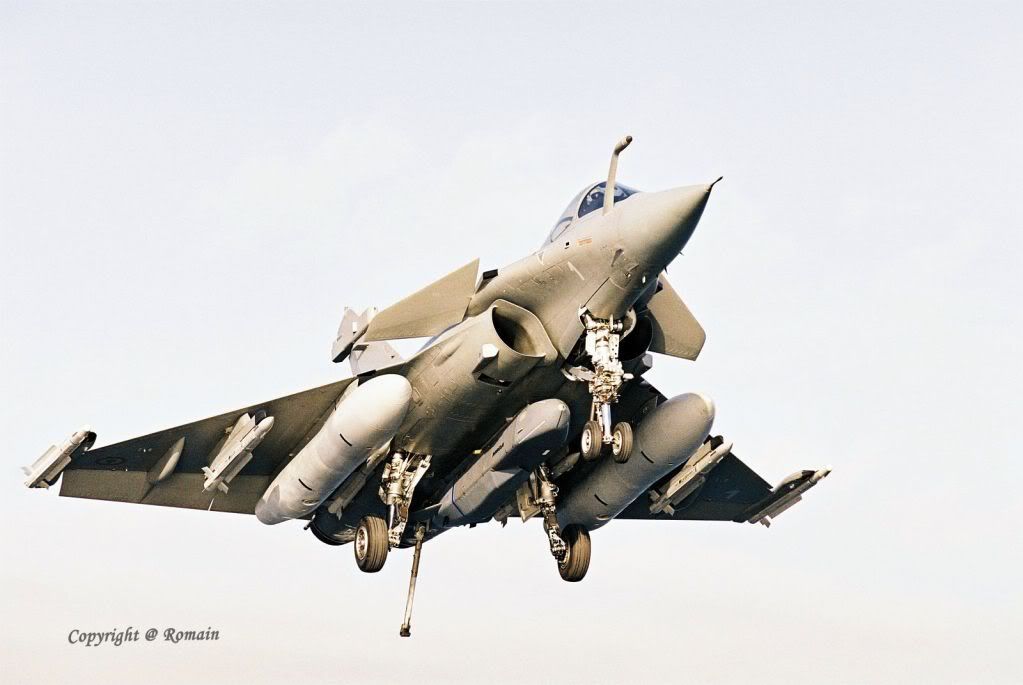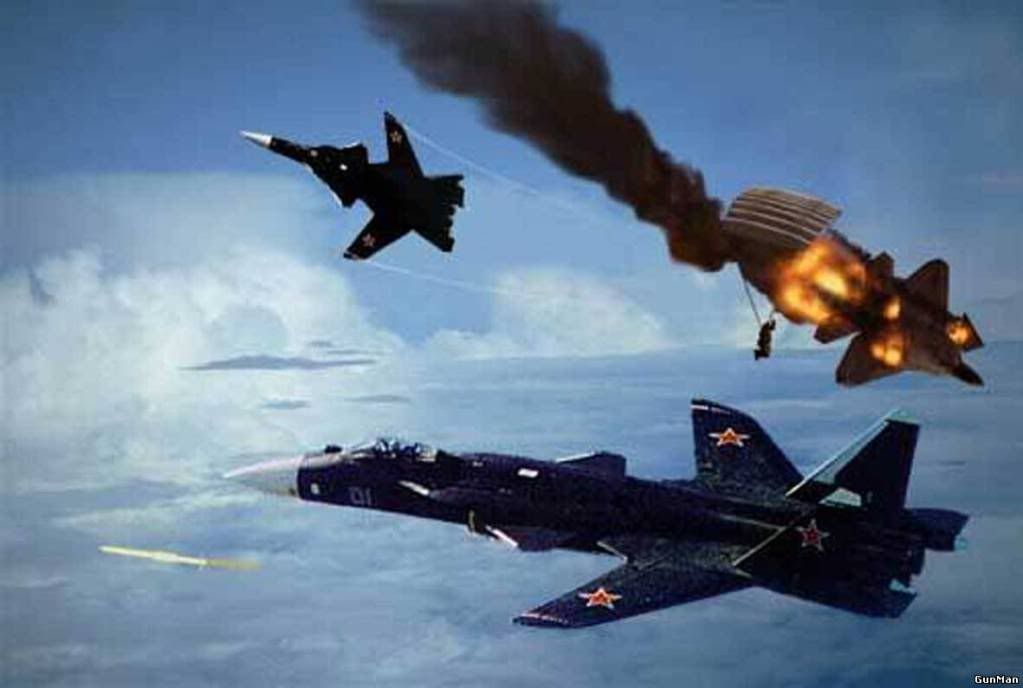Jf-17 SFW
Monday, February 27, 2012
Saturday, February 25, 2012
500th Serial Production Jf-17 in Special Marking v1.2
v1.2 0f earlier photo here.
This JFT is painted in special markings to commemorate the 500th production plane from PAC Kamra, also paying homage to Baba Quaid e Azam, Mohammad Ali Jinnah, also known as "J-the Mystery Man", whose vision led to the carving of Pakistan on the face of the sub-continent, which then led to co-operation between Pakistan and China and ultimately to Jf-17 Thunder project .
Also Note the paisa theme . Baba ji has been cropped from Rs. 500 Pakistani Ruppee Note and on Tires This Jf-17 has 1 Rupee like rims.
This JFT is painted in special markings to commemorate the 500th production plane from PAC Kamra, also paying homage to Baba Quaid e Azam, Mohammad Ali Jinnah, also known as "J-the Mystery Man", whose vision led to the carving of Pakistan on the face of the sub-continent, which then led to co-operation between Pakistan and China and ultimately to Jf-17 Thunder project .
Also Note the paisa theme . Baba ji has been cropped from Rs. 500 Pakistani Ruppee Note and on Tires This Jf-17 has 1 Rupee like rims.
500th Serial Production Jf-17 in Special Marking Photo
This JFT is painted in special markings to commemorate the 500th production plane from PAC Kamra, also paying homage to Baba Quaid e Azam, Mohammad Ali Jinnah, also known as "J-the Mystery Man", whose vision led to the carving of Pakistan on the face of the sub-continent, which then led to co-operation between Pakistan and China and ultimately to Jf-17 Thunder project .
Baba G zindabaaaaad....... !
Baba G zindabaaaaad....... !
Thursday, February 23, 2012
Sukhoi Pak-Fa under-carriage photos
The PAK FA, when fully developed, is intended to be the successor to the MiG-29and Su-27 in the Russian inventory and serve as the basis of the Sukhoi/HAL FGFAbeing developed with India.[14][15] A fifth generation jet fighter, the T-50 performed its first flight 29 January 2010.[3][16] Its
second flight was on 6 February and its third on 12 February 2010. As
of 31 August 2010, it had made 17 flights and by mid-November, 40 in
total. The second prototype was to start its flight test by the end of
2010, but this was delayed until March 2011.[
End of Global Hawk ?
 |
| PAF's manned Global Hawk. |
As reported by Avionics Intelligence .
- The report reads: “When we initially invested in the Global Hawk Block 30 program, it held the promise of providing essentially the same capability as the U-2 manned aircraft for significantly less money to both buy and operate. As the program has matured, these cost savings have not materialized and, at best, we project the future cost of Global Hawk Block 30 operations to be comparable with the U-2. In this five-year budget, the cost of the Global Hawk program would significantly exceed the cost of the U-2 so we cancelled Global Hawk Block 30 and extended the U-2 program. Although this is a significant disappointment, our experience with Global Hawk Block 30 will help other Global Hawk programs like the Air & Broad Area Maritime Surveillance (BAMS).”
Saturday, February 4, 2012
Chengdu J-10 S Photos
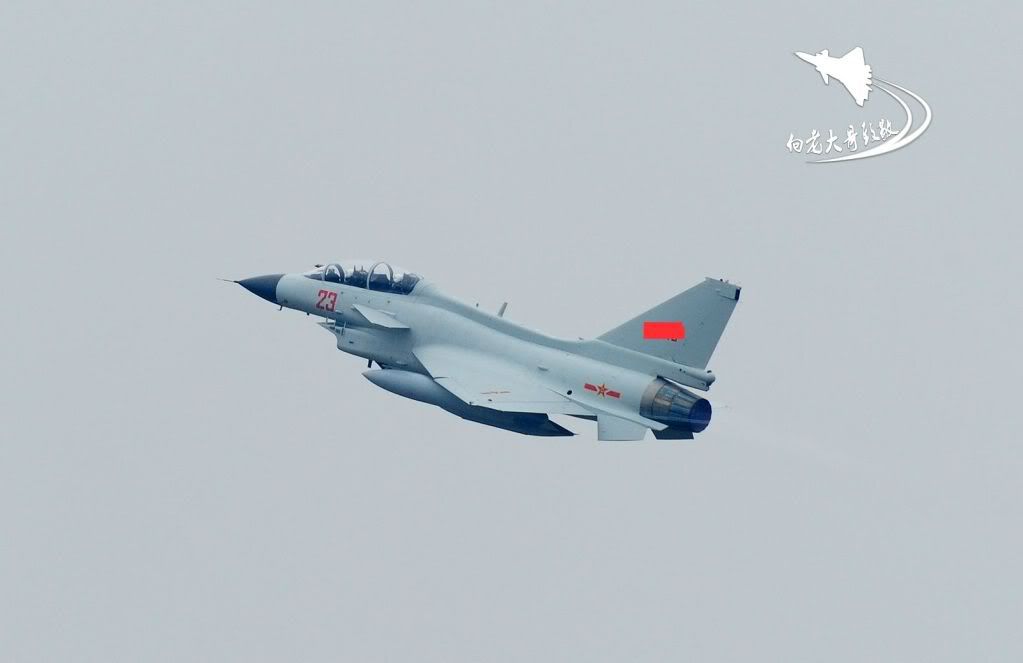 |
| Chengdu J-10 S taking off. |
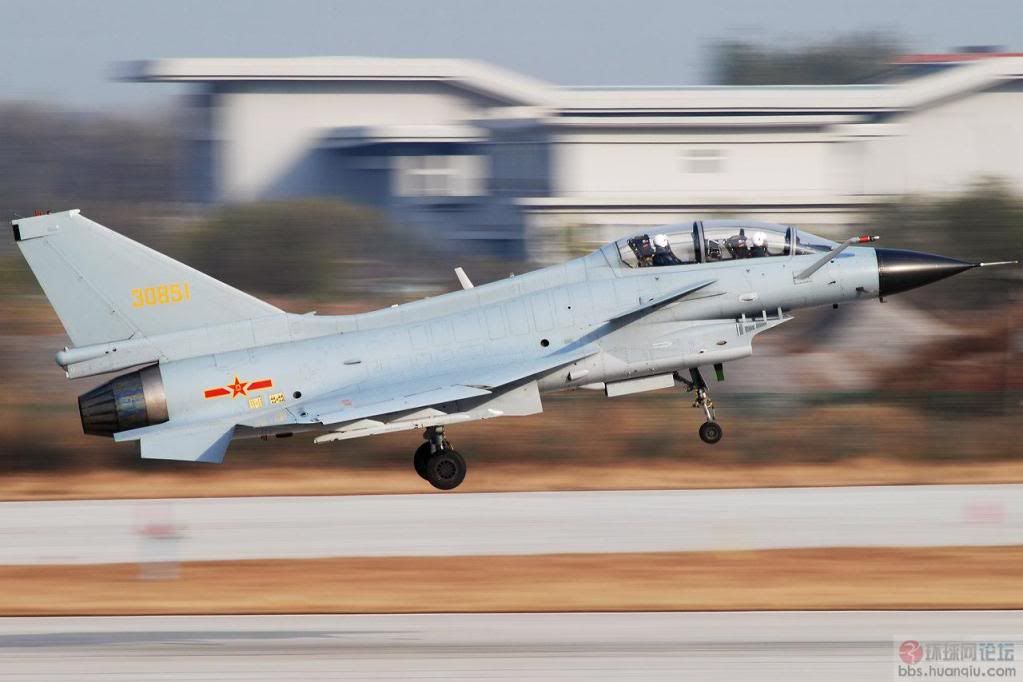 |
| Chengdu J-10 S never rests, taking off again. |
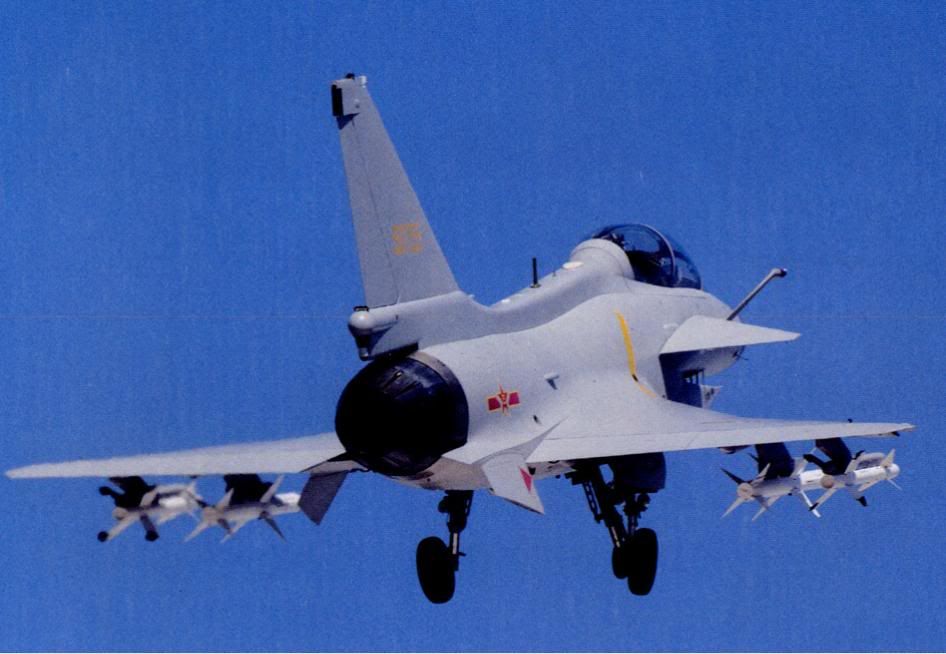 . . |
| ......And again, loaded with 2x BVRAAM and 2x SRAAM. |
J-10S: Twin-seat fighter-trainer variant of the J-10A. The forward fuselage of the aircraft is stretched to accommodate an additional pilot seat, two pilots sit in tandem with a single large bubble canopy. Also incorporates an enlarged dorsal spine which may accommodate additional avionics equipment or fuel. As well as serving as training aircraft, the J-10S may also be used for the ground attack role where the rear seat pilot would act as the weapon systems operator.
Thursday, February 2, 2012
Jf-17 Thunder evolves: Naval JF17 / Fc-1
As per Pshamim of Pak Def :
- Though the PLAAF has not taken delivery of FC-1-twin brother of JF-17,
Chinese Navy has shown great interest in FC-1. A naval version of FC-1
has been developed and the first test flight is expected to take place
in 2012. FC-1 is now being planned as a carrier based aircraft along
with othet type of aircrafts, probable SU-33.
This is a gret omen for JF-17 as the news indicated a continuous and on going development of the FC-1/JF-17 program. I also feel that we my see a new version beyong Block-3. China and Pakistan have shown great interest and faith in this program. We may hear further in 2012. - About the naval version of the FC-1, I have heard about few significant
changes including heavier undercarriage, Inlet design has been changed
to rib inlets necissitated by a new and larger nose changing the forward
fuselage center of gravity, and ensuring the static instability.
AlsoWings were also swept back and back to edge area has been increased.
As far as the Block-II of the land version that we have is concerned, good news is that major changes have been made in design which will allow it to borrow several features from both the FC-20 and J-11B. It is great to see an evolving Thunder.
Rafale wins MMRCA : Indian Airforce Rafale Photo
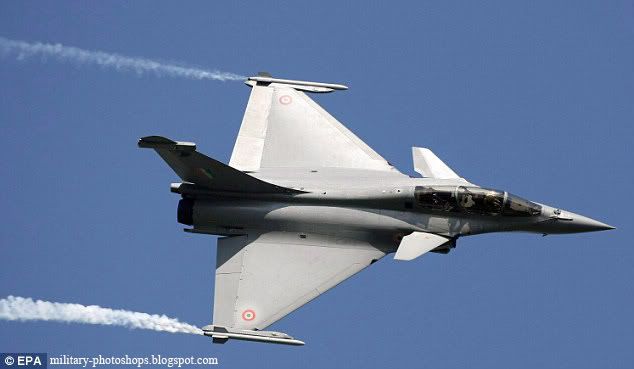 |
| Rafale in Indian Airforce colors. |
French Dassault fighter aircraft Rafale has been selected to be the Medium Multi Role Combat Aircraft (MMRCA) of the Indian Air Force (IAF).
Dassault beat the four-nation consortium’s Eurofighter on price, with the fighter being identified as L1, or the lowest technically qualified bid.
StratPost understands that Dassault has been issued a letter from the Ministry of Defense, communicating their selection.
Three representatives of the Eurofighter consortium were also summoned to the Ministry of Defense at South Block on Tuesday afternoon, when they were informed of their loss in the competition.
The bid was originally estimated to be worth USD 10.4 billion, as per the budget estimate approved in 2007, but it is likely to have faced a substantial escalation in cost, keeping in mind inflation and the fall in the value of the Indian Rupee.
French jet Rafale bags $20bn IAF fighter order
French jet Rafale bags $20bn IAF fighter order; India 'briefs' losing European countries
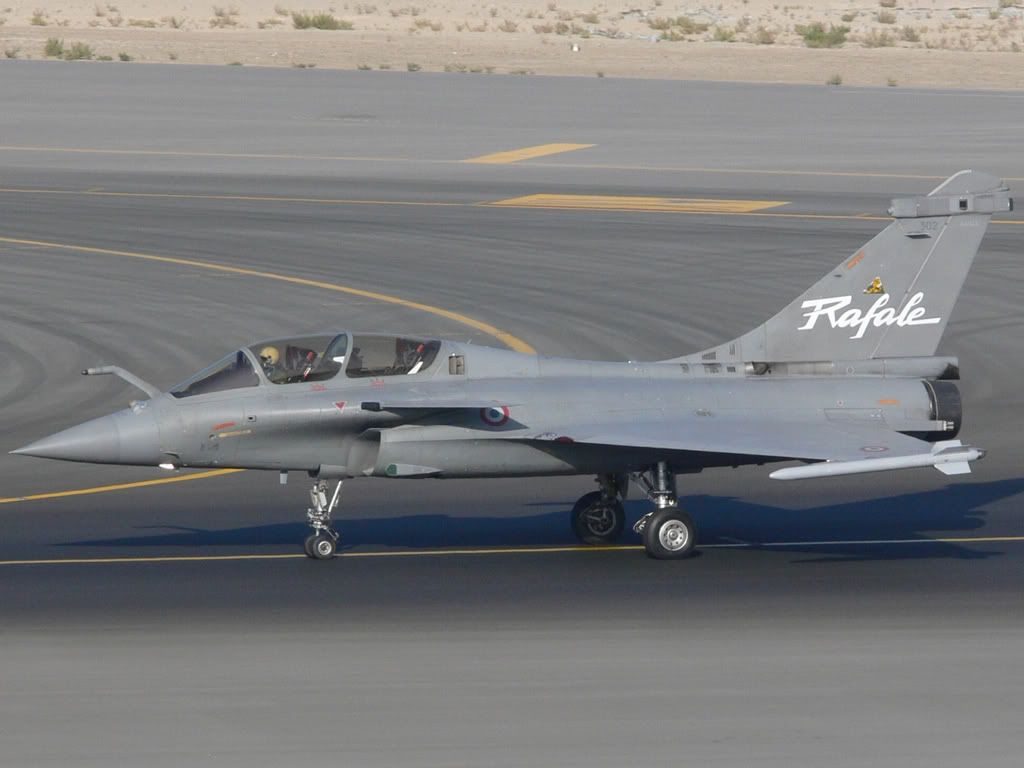 |
| The Rafale jets will replace India's ageing fleet of Russian MiGs, with the French company entering exclusive talks with the Indians to finalise the deal by March |
NEW DELHI: First, the Americans, Russians and Swedes were ejected out of the hotly-contested race. And now, the Europeans too have been shot down in the dogfight, leaving only the French flying high in the Indian skies.
After an exhaustive technical and commercial evaluation spread over five long years, India on Tuesday selected French jet Rafale over the Eurofighter Typhoon for the gigantic almost $20 billion MMRCA ( medium multi-role combat aircraft) programme to supply 126 fighters to IAF - the largest such "open-tender" military aviation deal in the world.
Sukhoi S-47 Berkut Golden Eagle
Originally known as the S-37, Sukhoi redesignated its advanced test aircraft as the Su-47 in 2002 reflecting the decision to market the design as a production fighter rather than as an experimental prototype. Also commonly referred to as the Berkut (Golden Eagle), the Su-47 was originally built as Russia's principle testbed for composite materials andsophisticated fly-by-wire control systems.
The aircraft makes use of forward-swept wings allowing superb maneuverability and operation at angles of attack up to 45° or more. The advantages of forward sweep have long been known as such wings offer lower wave drag, reduced bending moments, and delayed stall when compared to more traditional wing shapes.
Unfortunately, forward sweep also induces significant wing twist that would shear most wings off the aircraft. To solve this problem, the Su-47 makes use of composite materials carefully tailored to resist twisting while still allowing the wing to bend for improved aerodynamic behavior. To reduce development costs, the S-37 borrowed the forward fuselage, vertical tails, and landing gear of the Su-27 family.
Nonetheless, the aircraft includes reduced radar signature features (including radar absorbent materials), an internal weapons bay, and space set aside for an advanced radar.
Though similar in overall concept to the American X-29 research aircraft of the 1980s, the Su-47 is about twice the size and far closer to an actual combat aircraft than the US design.
Su-47 has shown far superior manuvering in the air to any aircraft known to this date.
Like the X-29 though, the Su-47 was primarily a technology demonstrator, one intended to lay the foundation for the next Russian fighter. Such a fighter must not only be as advanced as the US F-22 and Eurofighter Typhoon, but must also compete for funding with the more conventional MiGs. However, Sukhoi is now attempting to market the Su-47 to the Russian military and foreign customers as a production fighter in its own right. Initial reaction was not good, but the aircraft's performance has been so impressive that the Russian government has made funds available for further testing of the design.
Still, the low budgets of the Russian military and the aircraft's high price tag make it unlikely that the Su-47 will be purchased any time in the near future.
